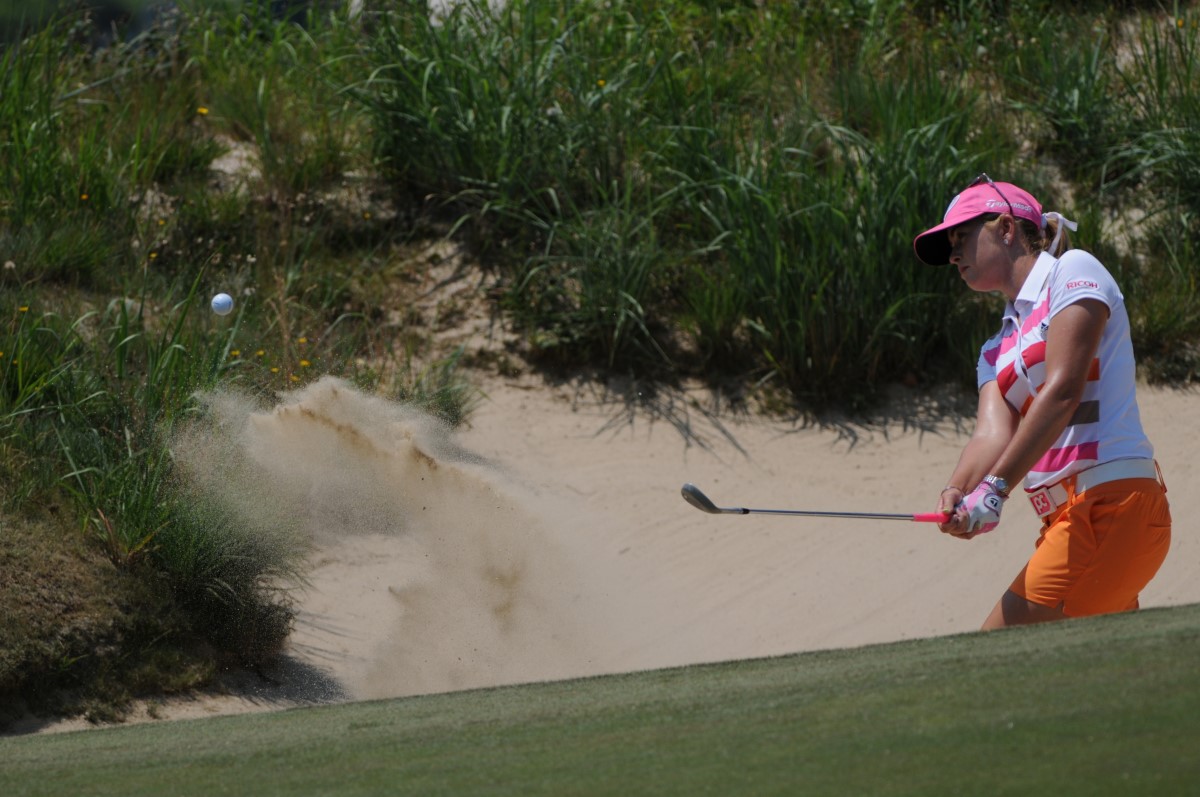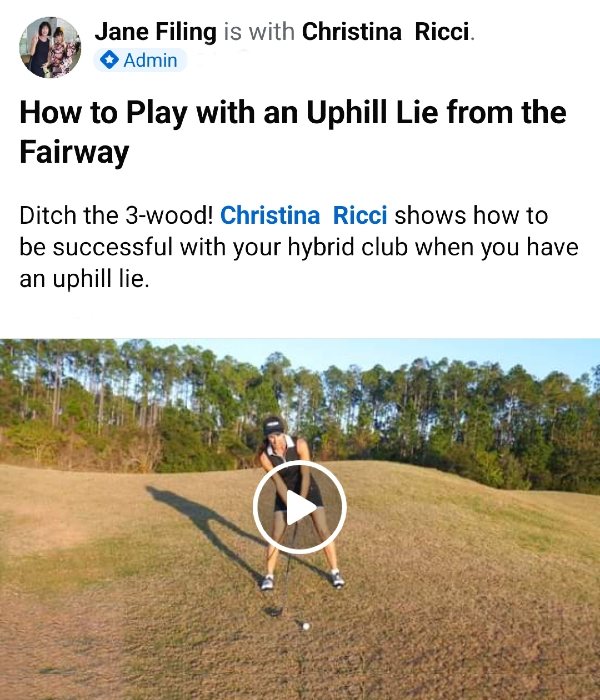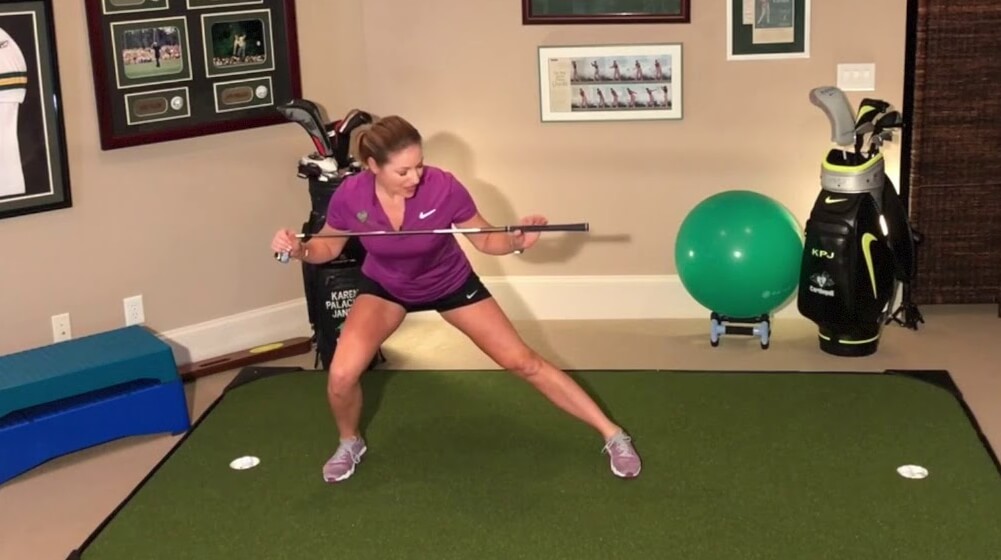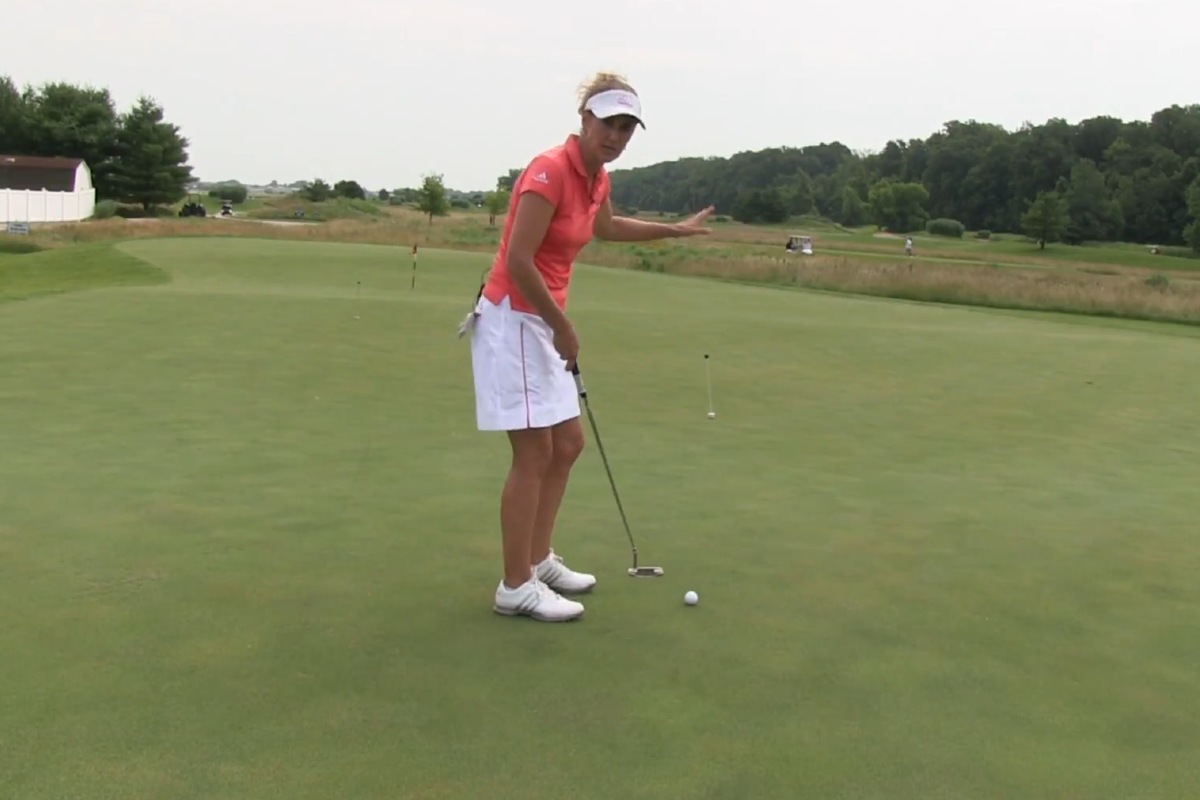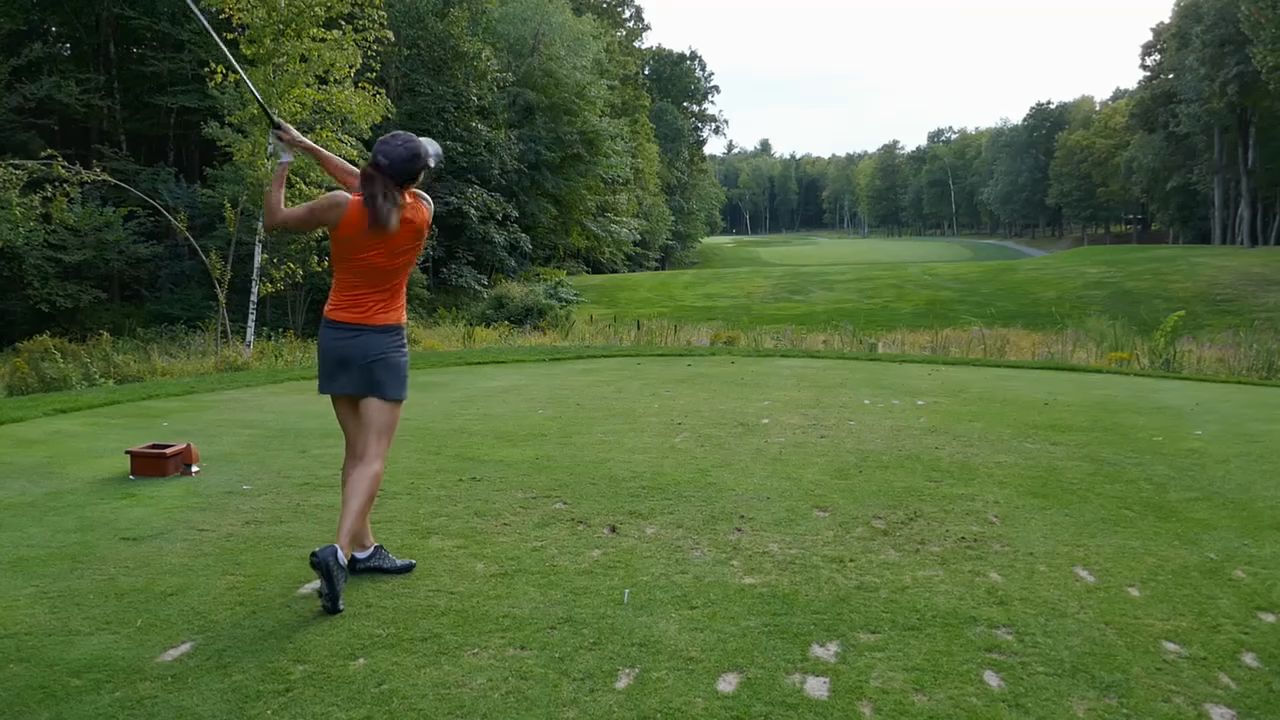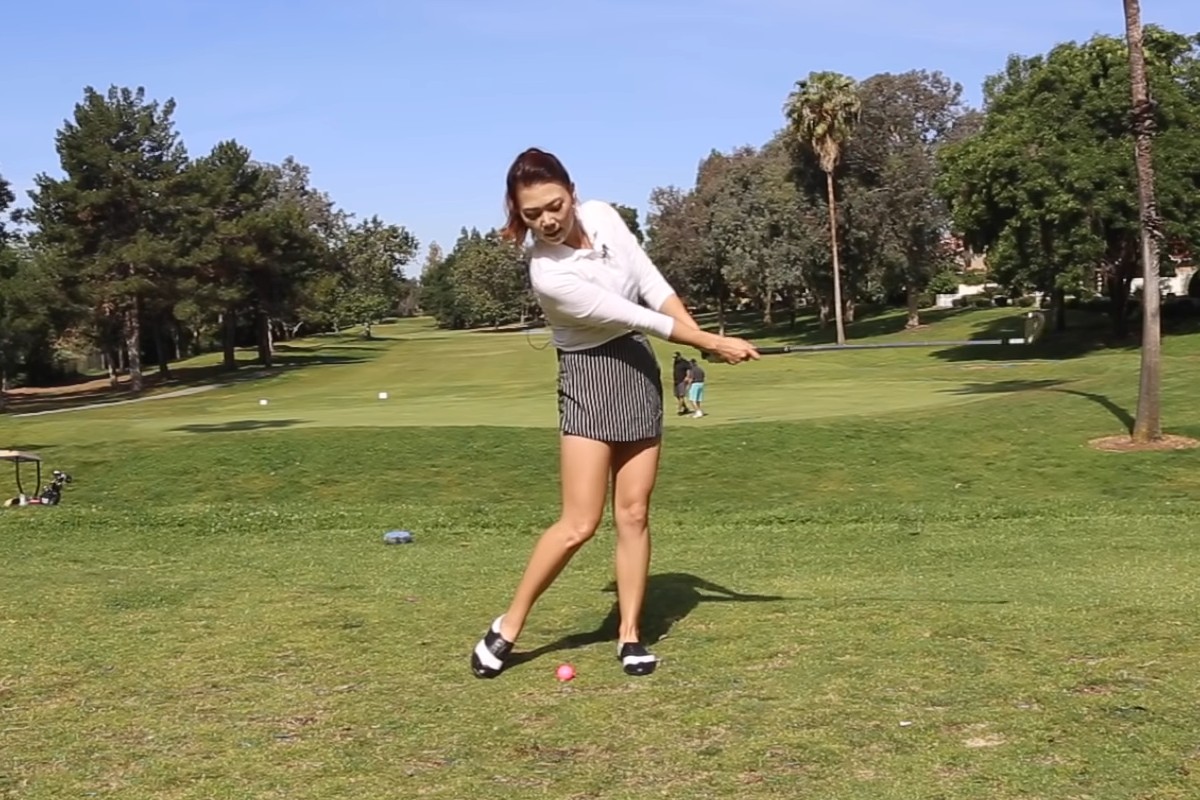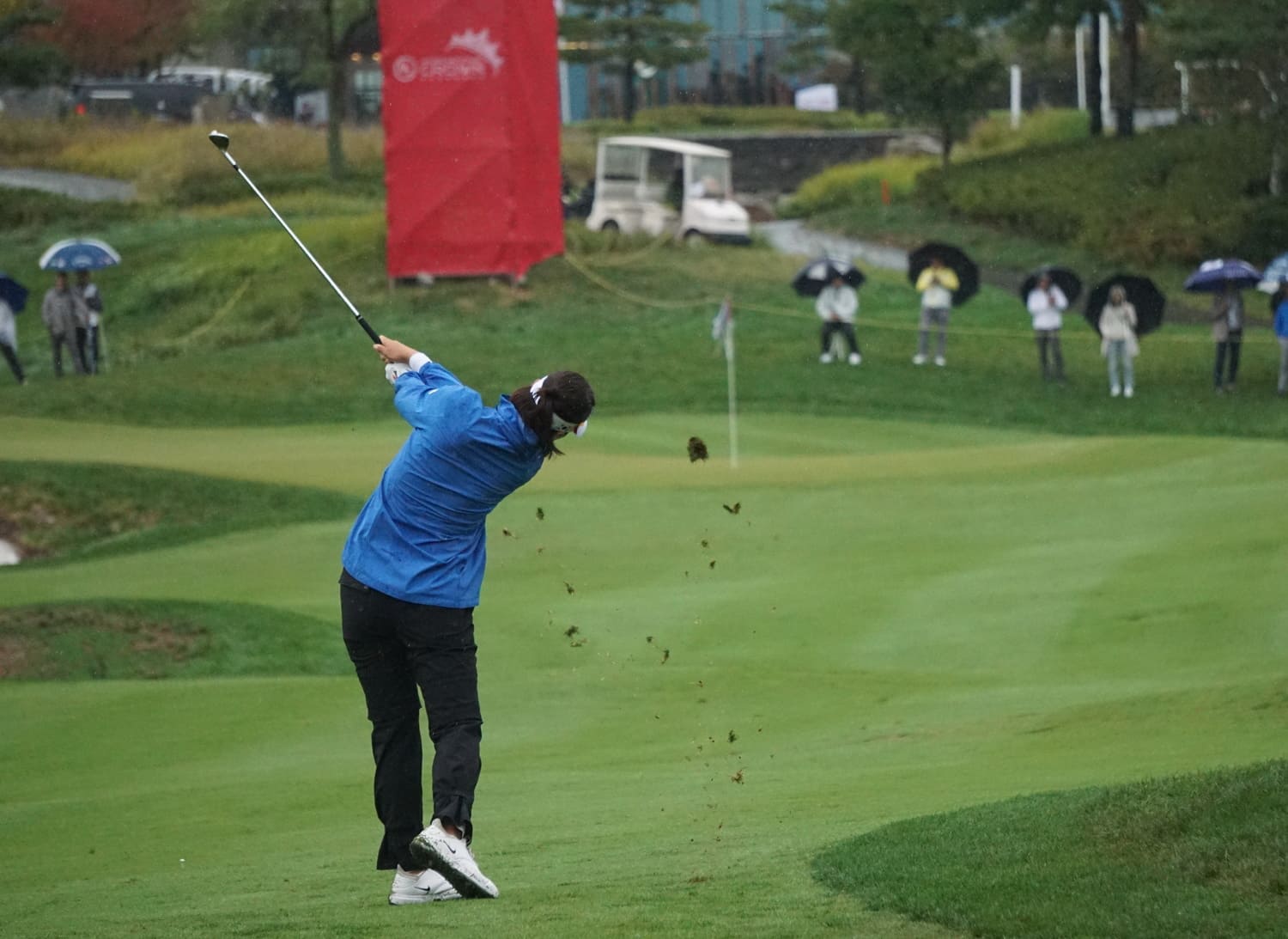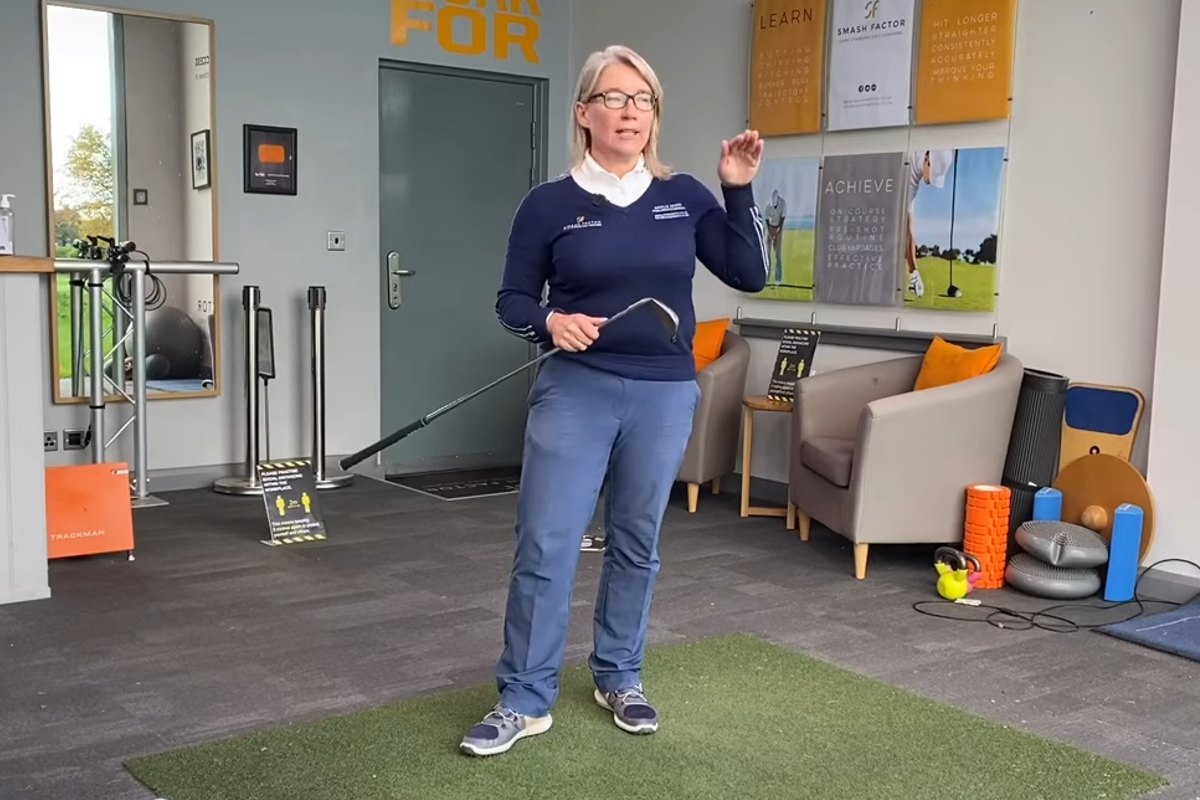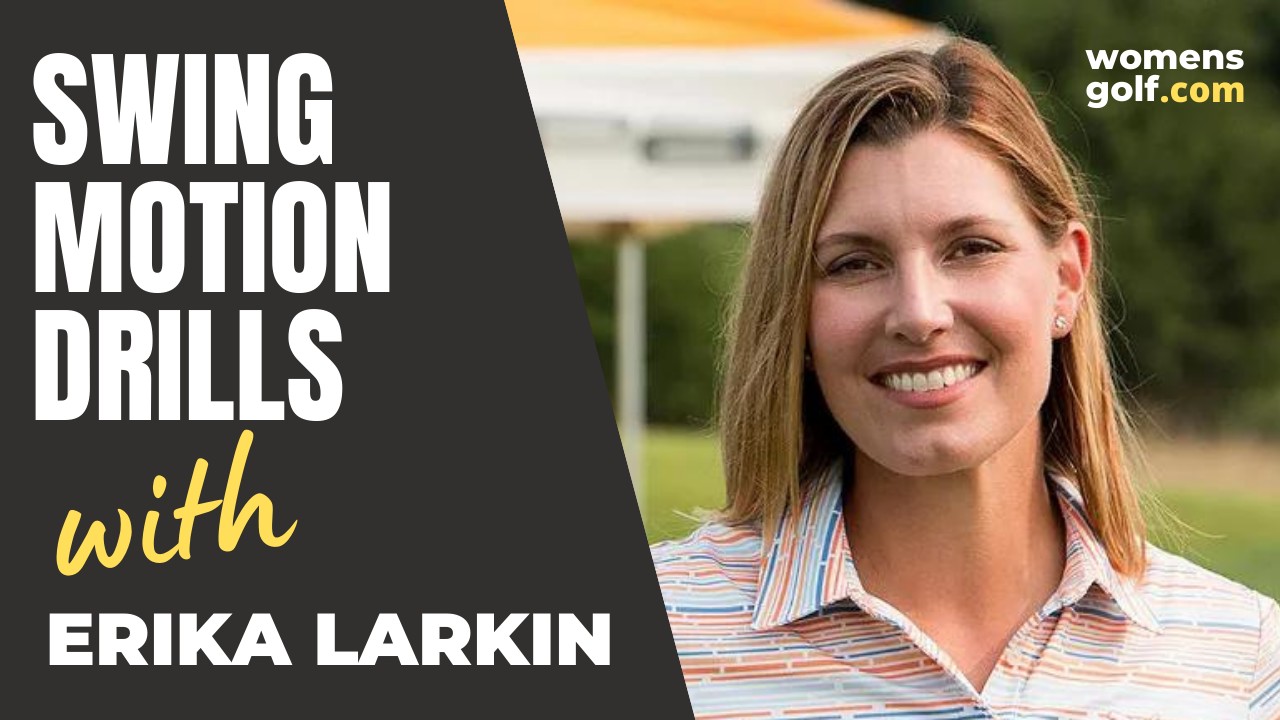For many of us, the sight of a sand trap creates anxiety. Understanding the modifications you must make to your already solid full swing set-up and how to use the sand wedge can help bunker play to become a strong part of your golf game. Repetition will eliminate the fear factor so spend some time practicing this important shot.
Your ability to hit consistently out of traps will help you to build confidence and save strokes.
The key to playing good bunker shots near the green is to take sand. We need to take the right amount of sand as accurately as possible. If you listen to the contact with a bunker shot, you should hear the club take the sand but not strike the ball itself.

The sand wedge is the club specifically designed for use in the sand trap. This club differs from other irons in that it is slightly heavier and that the sole of the club is wider and angles down lower than the front edge of the club. The difference with this club design helps make it easier to swing through the sand. The texture of the sand, though soft, is heavier than grass and offers greater resistance when contacted during the swing.
GREENSIDE BUNKER PLAY

- Slightly open clubface to add loft and to slightly utilize bounce angle. handle end slightly ahead to increase sand then ball contact.
- Dig your feet in the sand to establish a solid footing. Possibly more knee flex than your regular swing might help get sand than ball contact.
- Hit behind the golf ball to allow sand to “splash” shot onto the green. ball position slightly left of center. the sand will get the ball out of the bunker.
- Follow through to a full finish to get the ball up out of the bunker onto the green.
Thought: The length and speed of the swing for the greenside bunker shot usually will be greater than a shot equal in distance from the grass. This is because you will be moving sand to get the ball out of a greenside bunker. Study the sand with your feet and eyes to get a feel for the effort needed to take the amount of sand necessary to land the ball the desired distance on the green.
There are two types of greenside bunker shots: the splash shot and the explosion shot:
SPLASH SHOT
The splash shot is similar to an iron shot from the fairway with a couple of set up modifications. With the splash shot, the ball is forward in the stance and the clubface and stance are open. In essence, you are hitting a fat shot on purpose. The sand will push the ball out of the bunker and the open clubface along with your good finish will elevate the ball. A good splash shot has height and stop.
EXPLOSION SHOT
An explosion shot differs in the set up because the club must either swing down more steeply or dig into the sand to pop the ball out from a buried lie. The setup position is similar to a chip shot, using a full swing motion. The clubface position is square, but de-lofted because the ball position is back of center in your stance. This setup position will produce a shot that has a low trajectory with a lot of roll.
To keep your striking of the sand as accurate as possible, keep your shoulders a bit more level at address. This will help the backswing to be more of an up and down action. This makes it easier to enter the sand behind the ball. Make sure that you hit the sand onto the green and not simply dig into it. Swing slowly (with gravity drop feeling) in the bunker to make the club travel through the sand. If you develop too much speed, the clubhead gets caught.
FAIRWAY BUNKER PLAY

- Use slightly more club than what you might usually use for the distance you are planning for and swing smoothly.
- Keep the lower body quiet but allow your weight to transfer forward smoothly to a full, balanced finish. a ¾ swing is ideal so that you won’t over turn in the shot.
- Play the ball where you usually play the ball in your stance to permit ball then ground contact versus ground then ball contact as in the greenside bunker.
Thought: When considering the club to use in a fairway bunker take into consideration the height of the bunker lip and what you might use from a grassy lie to clear that height. Take a club with a little more loft than you would take from the grassy lie because you will err toward a thin shot in a fairway bunker to guard against taking any sand before contacting the ball like you do for a greenside bunker shot.[td_smart_list_end]
Always ensure that you get out of the bunker. Then, learn how to control the length of your shot by varying the size of swing, controlling the amount of sand taken, or even changing clubs. In time, bunker play can be a strong part of your golf game.
Have some fun at the “beach”!
Deb
PHOTO CREDITS:
Paula Creamer and Juli Inkster by Bob Shank at www.perfectgamephotos.com – Facebook | Twitter | Instagram
Titiya Plucksataporn at Australian Ladies Masters by David Burness of Kinetic Images – Instagram | Twitter

